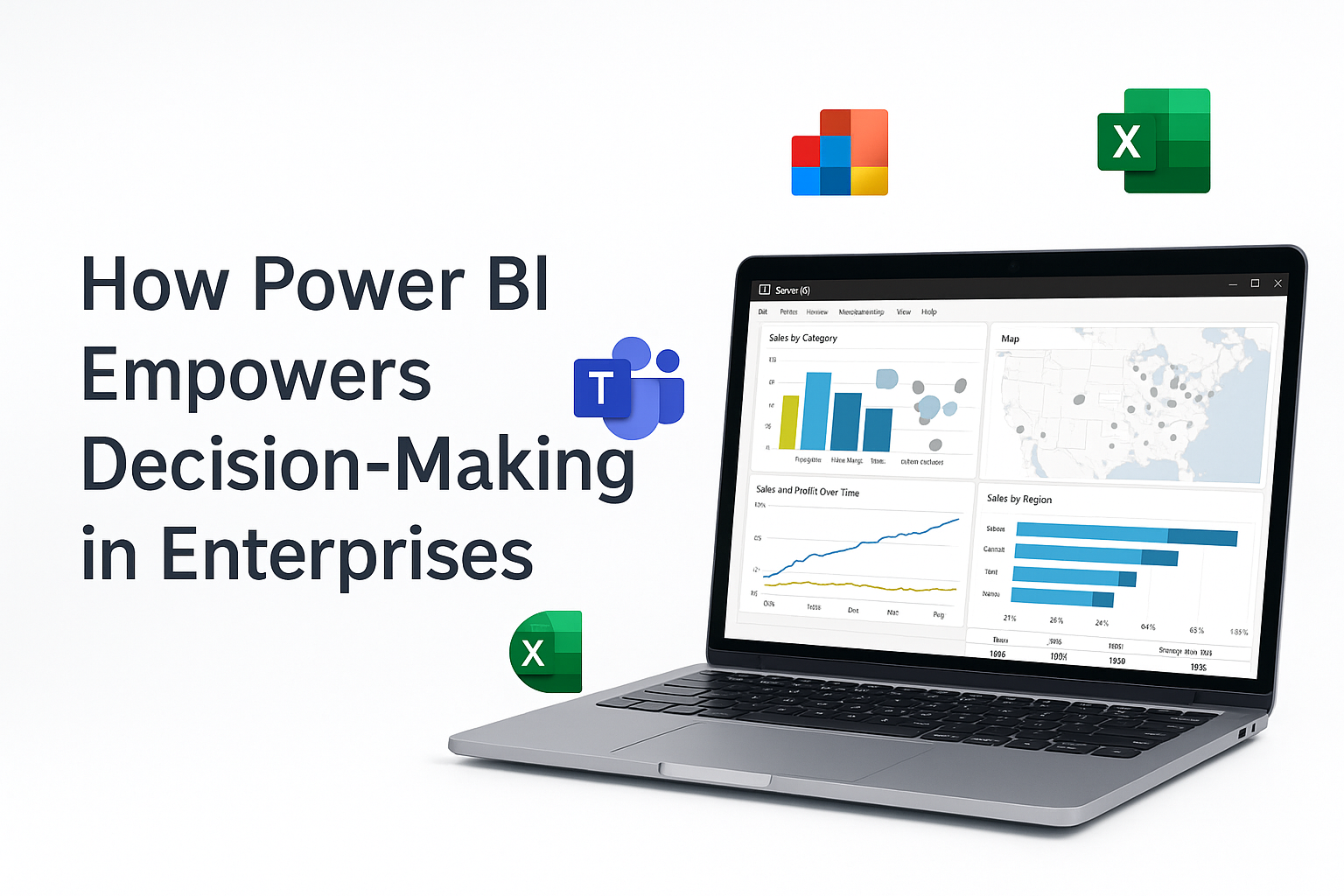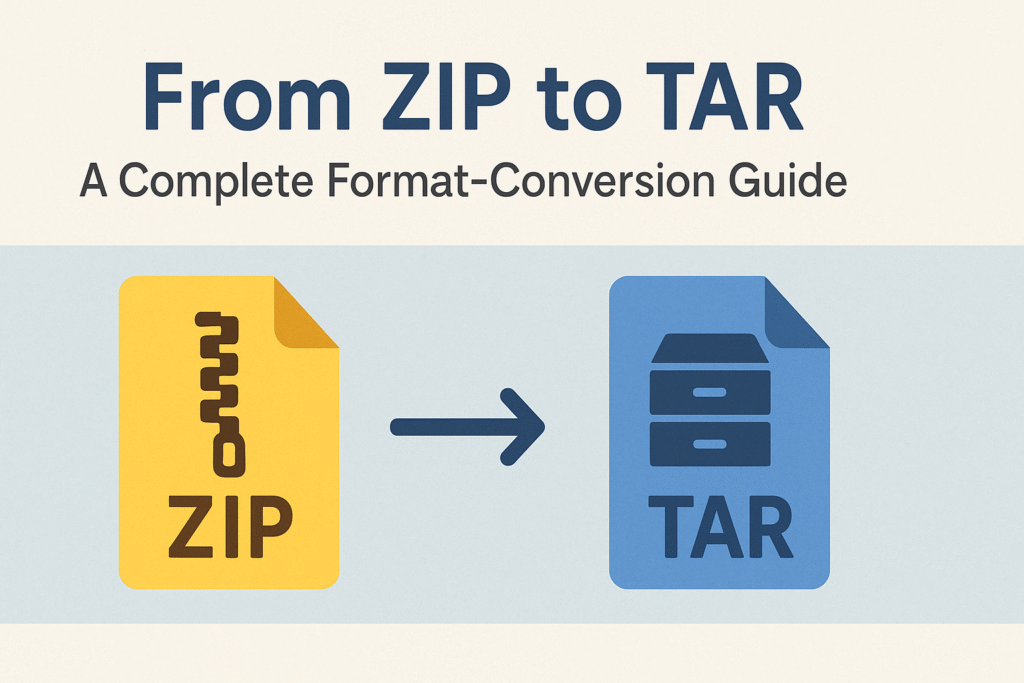Enterprises are flooded with information from various sources, sales transactions, customer feedback, market research, and more. The challenge lies not in the availability of data but in how effectively businesses can analyze and use it to make informed decisions. Microsoft’s Power BI has emerged as a transformative tool for enterprises, allowing them to convert raw data into actionable insights with ease and precision.
Power BI is more than just a visualization tool; it’s a comprehensive business intelligence (BI) platform that empowers organizations to monitor key performance indicators (KPIs), track progress in real-time, and make data-backed decisions that drive growth. This article explores how Power BI revolutionizes decision-making in enterprises and why it has become an indispensable asset for modern businesses.
What is Power BI and Why It Matters for Enterprises
Power BI is Microsoft’s business analytics service designed to help organizations visualize data, share insights, and make decisions based on real-time analytics. It connects to a wide range of data sources, both cloud and on-premises, and offers interactive dashboards, reports, and visualizations.
For enterprises, Power BI is a cornerstone of digital transformation. It empowers decision-makers with the ability to analyze data across departments, uncover hidden trends, and act swiftly based on reliable insights. Whether it’s financial forecasting, operational efficiency, or customer behavior analysis, Power BI plays a vital role in enhancing enterprise intelligence.
The platform’s user-friendly interface, coupled with its deep integration into Microsoft’s ecosystem (including Excel, Azure, and Dynamics 365), makes it an ideal choice for businesses seeking to establish a data-centric culture.
Centralized Data Management and Integration
Enterprises handle vast amounts of data scattered across multiple platforms, including CRM systems, ERP software, databases, and third-party applications. Power BI simplifies this complexity by providing a unified platform for data integration and management.
Through Power Query and built-in connectors, Power BI enables organizations to consolidate data from diverse sources such as SQL databases, SharePoint, Salesforce, and cloud services. This ensures that all stakeholders access a single version of the truth rather than working with fragmented or outdated information.
Centralizing data through Power BI not only improves data consistency but also streamlines reporting workflows. Instead of manually extracting and merging data, enterprises can automate data refresh cycles and maintain real-time dashboards that reflect the most recent figures.
This holistic approach to data management allows leadership teams to make faster and more informed decisions, reducing inefficiencies, errors, and redundancies.
Enhanced Data Visualization and Real-Time Reporting
One of the most celebrated features of Power BI is its exceptional data visualization capability. Enterprises can transform raw, complex datasets into intuitive visuals bar charts, heat maps, scatter plots, and more, that make data easier to interpret.
The drag-and-drop interface enables users to create custom dashboards that highlight critical metrics relevant to their roles. Executives can monitor company-wide KPIs, while department heads can focus on specific operational insights.
Moreover, Power BI supports real-time reporting, allowing decision-makers to track live business activities such as sales performance, supply chain status, or website traffic. Alerts and notifications can be configured to trigger when key metrics deviate from targets, ensuring proactive decision-making instead of reactive problem-solving.
By visualizing complex data in digestible formats, enterprises can enhance transparency, improve cross-departmental communication, and foster a culture of evidence-based decisions.
Empowering Self-Service Analytics
Traditionally, business intelligence was confined to IT teams and data analysts. Business users had to depend on technical experts to generate reports or extract insights. Power BI has changed this paradigm by promoting self-service analytics, empowering non-technical users to analyze data independently.
With its intuitive interface and integration with familiar tools like Excel, Power BI allows employees across all departments to build their own reports without writing a single line of code. The use of natural language queries (Q&A) further simplifies analytics, enabling users to ask questions like “What were the total sales last quarter?” and get immediate visual answers.
This democratization of data ensures that insights are not restricted to top management. From marketing executives to HR professionals, every team member can access and interpret relevant data to drive better outcomes.
Ultimately, Power BI promotes data literacy and empowers everyone in the organization to participate in the decision-making process.
Seamless Collaboration and Data Sharing
Effective decision-making in enterprises requires collaboration across teams and departments. Power BI facilitates seamless sharing of dashboards, reports, and datasets, ensuring that stakeholders are aligned and informed.
Through the Power BI Service, users can publish and share reports securely via the cloud, embed them into Microsoft Teams or SharePoint, or even integrate them into enterprise applications. This eliminates the need for emailing static reports, which often leads to version confusion and delays.
The integration with Microsoft 365 enhances collaborative workflows. Teams can discuss insights directly within shared dashboards, annotate reports, and track real-time updates, creating a dynamic environment for data-driven discussions.
This collaborative approach not only accelerates decision-making but also ensures that everyone from executives to front-line employees has access to accurate, timely, and relevant insights.
AI-Driven Insights and Predictive Analysis
Incorporating artificial intelligence (AI) and machine learning (ML) features, Power BI takes enterprise analytics to a whole new level. It enables predictive analysis, anomaly detection, and trend forecasting, allowing decision-makers to anticipate outcomes rather than just react to them.
Features like Quick Insights and Cognitive Services automatically identify correlations and patterns in data that might not be immediately visible. With Azure Machine Learning integration, enterprises can even deploy custom models directly within Power BI to forecast future scenarios such as sales projections, inventory levels, or customer churn rates.
AI-driven insights reduce the dependency on specialized data scientists while empowering business users to make informed strategic decisions with confidence.
By combining descriptive, diagnostic, and predictive analytics, Power BI ensures that enterprises not only understand what’s happening but also why it’s happening and what might happen next.
Scalability and Security for Large Enterprises
For enterprise-level organizations handling massive datasets, scalability and security are top priorities. Power BI delivers on both fronts with robust features designed to support growing business needs.
The platform is built on Microsoft Azure, ensuring enterprise-grade scalability and performance. Whether an organization has hundreds or thousands of users, Power BI can handle large-scale data processing efficiently.
From a security standpoint, Power BI adheres to stringent compliance standards (ISO 27001, GDPR, and SOC certifications) and offers role-based access control, data encryption, and audit logging. Administrators can manage user permissions centrally, ensuring sensitive information is only accessible to authorized individuals.
Furthermore, with Power BI Premium, enterprises gain dedicated cloud capacity, advanced dataflows, and enhanced governance capabilities, making it ideal for complex BI deployments.
This combination of scalability and security ensures that enterprises can confidently expand their analytics ecosystem without compromising performance or data integrity.
Cost-Effectiveness and Accessibility
Unlike traditional BI tools that require heavy infrastructure investments, Power BI offers a cost-effective solution that delivers enterprise-level analytics without breaking the bank.
Its subscription-based pricing model (Power BI Pro and Power BI Premium) allows organizations to scale usage as needed, paying only for what they use. Since it’s cloud-based, there’s minimal setup cost and no need for complex on-premises hardware.
Power BI also provides exceptional accessibility. With mobile apps for iOS and Android, users can view and interact with dashboards from anywhere, ensuring decisions can be made on the go. This flexibility is particularly beneficial for enterprises with global teams or remote operations.
The combination of affordability, ease of deployment, and accessibility makes Power BI a strategic investment for enterprises aiming to maximize ROI on their analytics initiatives.
Use Cases of Power BI in Enterprise Decision-Making
The real-world applications of Power BI across industries illustrate its versatility and impact:
Finance and Accounting: Automate financial reporting, monitor cash flow, and identify revenue trends in real-time.
Sales and Marketing: Analyze customer acquisition costs, conversion rates, and campaign performance to refine strategies.
Human Resources: Track employee productivity, engagement, and retention metrics to improve workforce planning.
Supply Chain Management: Monitor inventory levels, supplier performance, and logistics efficiency for better demand forecasting.
Healthcare: Analyze patient data, resource utilization, and treatment outcomes to enhance operational and clinical decisions.
Retail and eCommerce: Identify buying trends, optimize product placement, and improve customer satisfaction through personalized insights.
In each of these scenarios, Power BI enables decision-makers to visualize data, identify patterns, and implement strategies that drive measurable improvements.
Final Thoughts: The Future of Enterprise Decision-Making with Power BI
The future of enterprise decision-making lies in agility, precision, and data democratization, all of which Power BI delivers with excellence. By transforming raw data into clear insights, it empowers organizations to make proactive, data-informed decisions at every level.
In an increasingly competitive business landscape, the ability to act on data-driven insights is what sets successful enterprises apart. Power BI provides the technological foundation for this shift, bridging the gap between data collection and strategic execution.
As artificial intelligence and data analytics continue to evolve, Power BI will only grow more powerful, offering smarter automation, deeper integrations, and even more intuitive analysis capabilities.
Enterprises that embrace Power BI today position themselves for long-term success, ensuring that every decision from boardroom strategies to frontline actions is guided by data, not guesswork.








Leave a Reply